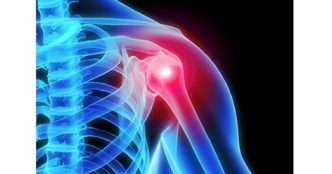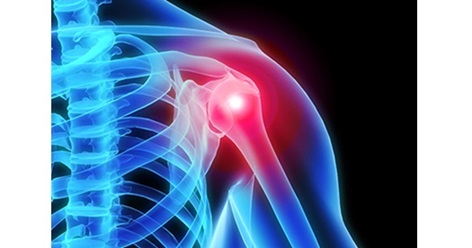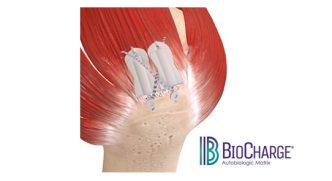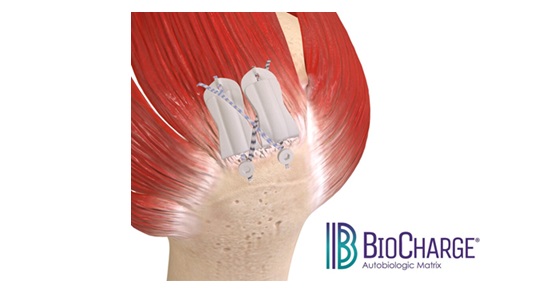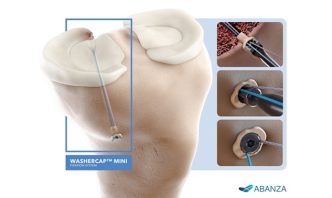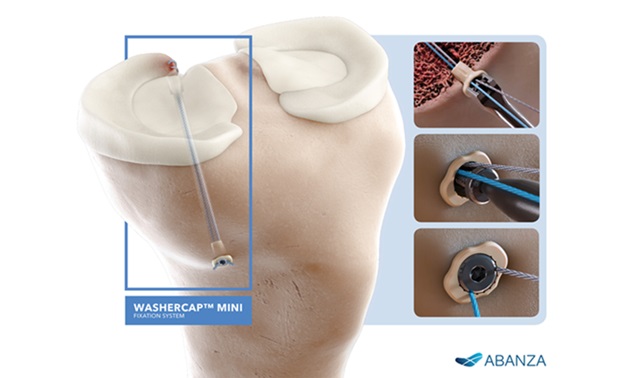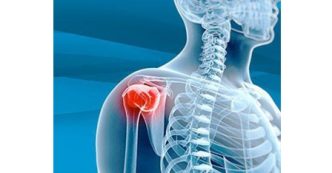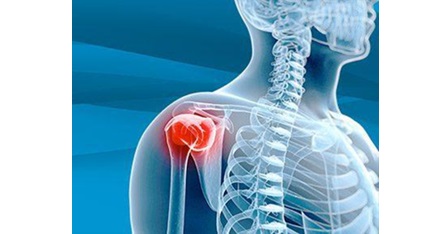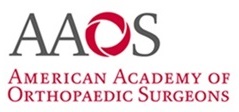
ROSEMONT, Ill., Feb. 7, 2025 /PRNewswire/ — The 2025 Kappa Delta Ann Doner Vaughn Award was presented to Matthew T. Provencher, MD, MBA, CAPT MC USNR (Ret.), and his military orthopaedic colleagues for their work in understanding and treating anterior shoulder instability among U.S. military members. Spanning 25 years, this research has had a worldwide impact on treatment options, indications and surgical techniques, leading to what is now considered by many to be a gold standard technique for arthroscopic shoulder stabilization. These contributions have guided clinical and surgical decision-making while enhancing patient care.
To read more about the award, please click here.
Shoulder instability, which presents as either a complete dislocation or partial dislocation (subluxation), is one of the most common shoulder injuries, often leading to persistent disability and reduced ability to perform athletic and occupational tasks. The team’s research highlighted the heightened prevalence of this condition in military populations, initially identifying a six-fold incidence (169 per 100,000 person-years) and an 18-fold increase in anterior shoulder instability at U.S. military academies (435 per 100,000 person-years).[i] The elevated rates among military members are often attributed to this population’s young, active nature, which is often when shoulder instability occurs, coupled with the physical demands and unpredictable nature of the job.
“Once our research team became keenly aware of the high incidence rates among military members who suffered from anterior shoulder instability, we knew we had to take a closer look at identifying why this patient population is so susceptible to this injury and evaluate short- and long-term treatment outcomes for both nonoperative and operative care ,” said Dr. Provencher, professor of orthopaedics and orthopaedic surgeon at the Steadman Clinic in Vail, Colorado.
Advancing Treatment and Improving Outcomes
Historically, patients with a first-time dislocation were treated with brief immobilization followed by physical therapy and eventual return to activity. However, after more than two decades of research, the team evolved how first-time shoulder instability is managed in young, active populations by studying military populations. Together, they shifted the treatment philosophy from nonoperative management as a first-line treatment to “right surgery for the right patients, and to get it right the first time.” This evidence-based approach has improved patient outcomes and has been widely adopted by the international orthopaedic community.
While there were some previous improvements with arthroscopic Bankart repair (a surgical procedure to treat a torn glenoid labrum) over nonoperative management, the team was concerned with the failure rates of this procedure and the consequences it can have for those on active duty.
“Our early attempts at arthroscopic stabilization showed unacceptably high failure rates,” said COL Brett D. Owens, MD, USN (Ret.), co-author, chief of sports medicine and professor of orthopaedic surgery at Brown University Alpert Medical School in Providence, Rhode Island. “While we were not the first group to examine the failure rates with this procedure, we were able to examine these results in the highest-risk population in the world, allowing for a robust failure analysis to scrutinize the outcomes.”
With funding from the Department of Defense for a peer-reviewed research grant, the team conducted studies into the early identification of glenohumeral pathomorphology (the study of pathologies that impact the glenohumeral joint) and optimized return-to-duty strategies. To date, they have prospectively enrolled 1,800 patients to evaluate baseline chondral (cartilage) status and post-injury chondral changes with baseline and post-injury MRI.
Addressing Bone Loss and Under-Recognized Pathology
One of the most significant factors contributing to arthroscopic treatment failures is glenoid bone loss (GBL), the amount of bone missing in the shoulder blade socket. Additionally, a humeral bone injury called Hill-Sachs lesions (HSL) magnifies the problem, and these need to be studied together for a complete picture of the instability. The role of GBL in improving outcomes has been one of the most important topics surrounding the treatment of shoulder instability over the last 20 years.
“Bone loss became one of the seminal topics of this manuscript,” said Dr. Provencher. “Our research represents years of research to restore the anatomy and mechanics in the shoulder and make the joint as solid and predictable as possible. We worked closely with musculoskeletal radiologists to identify all underlying pathology, including under-recognized injuries such as humeral avulsion of the glenohumeral ligament (HAGL) tears. By optimizing surgical techniques and addressing the full spectrum of pathology — from capsular injuries to bony lesions — we dramatically improved outcomes.”
The team made the following innovations and discoveries from military centers all over the world:
- Establishing a glenoid and humeral head bone loss model to predict outcomes in patients indicated for arthroscopic Bankart repair using age, sex, duration of shoulder instability, symptoms and radiographic images of the anatomy of the lesions.
- Defining the amount of bone loss to determine the type of surgery patients receive.
- Improving outcomes by reconstructing the anatomy of the shoulder with a novel osteochondral allograft solution for glenoid bone loss by taking the distal tibia to fit the anterior glenoid, thereby providing important biomechanical and matching data, as well as in vivo clinical follow-up.
“The distal tibia proved to be an exceptional match, offering dense, robust bone with good cartilage,” said Dr. Provencher. “Thanks to the incredible gift of life, we developed a bone and cartilage solution that demonstrated good outcomes in healing, bone incorporation and joint stability. This discovery allowed us to try to restore the shoulder’s anatomy and mechanics and repair the injured bone, capsule and labrum to create a joint that is as stable and reliable as possible.”
The research also catalyzed the Military Orthopaedic Tracking Injuries Outcomes Network (MOTION), established in 2016, an initiative developed in collaboration with military colleagues. Now the world’s largest military outcomes database, MOTION has more than 10,000 patients enrolled and is pivotal in tracking long-term outcomes of instability-related injuries. The database, which helped inform many of the team’s discoveries, aims to use data to enhance military medical readiness and optimize the use of medical resources through comprehensive evaluations of short- and long-term musculoskeletal injury outcomes.
“It’s difficult for the civilian world to understand the profound sense of responsibility felt by military surgeons, particularly those who have served in wartime,” said COL John M. Tokish, MD, MC, USAR, co-author and professor of Orthopaedic Surgery at Mayo Clinic, Phoenix, Arizona. “There is a tremendous and palpable sense of legacy, paid for by those who came before us, that we are committed to honoring and passing on to future generations. Through the dedication of pioneers who translated this mission into impactful research and with the military’s support, we’ve made significant strides. Our team has advanced the understanding of anterior shoulder instability, from nuanced injury patterns to long-term epidemiology and randomized controlled trials, culminating in over 270 peer-reviewed publications that have transformed patient care worldwide. This work is a testament to the collective effort to give back to the military and improve outcomes for all.”
In addition to Dr. Owens and Dr. Tokish, the following co-authors contributed to the research: COL Jonathan F. Dickens, MD, MC, USAR; Eoghan T. Hurley, MD, PhD; CAPT Lance E. LeClere, MD USNR; LTC Andrew J. Sheean, MD USAF; COL Jeanne C. Patzkowski, MD USA; CAPT Robert A. Waltz, MD USN; and LTC Stephen Parada, MD USA.
About the AAOS
With more than 39,000 members, the American Academy of Orthopaedic Surgeons is the world’s largest medical association of musculoskeletal specialists. The AAOS is the trusted leader in advancing musculoskeletal health. It provides the highest quality, most comprehensive education to help orthopaedic surgeons and allied health professionals at every career level to best treat patients in their daily practices. The AAOS is the source for information on bone and joint conditions, treatments and related musculoskeletal health care issues; and it leads the health care discussion on advancing quality.
Follow the AAOS on Facebook, X, LinkedIn and Instagram.
About the Kappa Delta Awards
The Kappa Delta Awards, the first of which was established by the Kappa Delta Sorority and awarded in 1950, are presented by the AAOS to persons who have performed research in orthopaedic surgery that is of high significance and impact. The sorority would later add two more awards, valued at $20,000 each. Two awards are named for the sorority national past presidents who were instrumental in the creation of the awards: Elizabeth Winston Lanier and Ann Doner Vaughn. The third is known as the Young Investigator Award.
For more information, please visit aaos.org/kappadelta. Learn more about the Kappa Delta Foundation, here.
Disclosure
Funding and Conflicts of Interest
For a list of disclosures, funding and conflicts of interest, email media@aaos.org.
i Owens BD, Duffey ML, Nelson BJ, et al. 2007. The incidence and characteristics of shoulder instability at the United States Military Academy. Am J Sports Med 35:1168-1173.
SOURCE American Academy of Orthopaedic Surgeons

